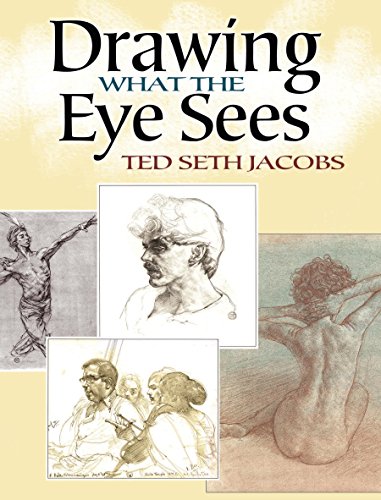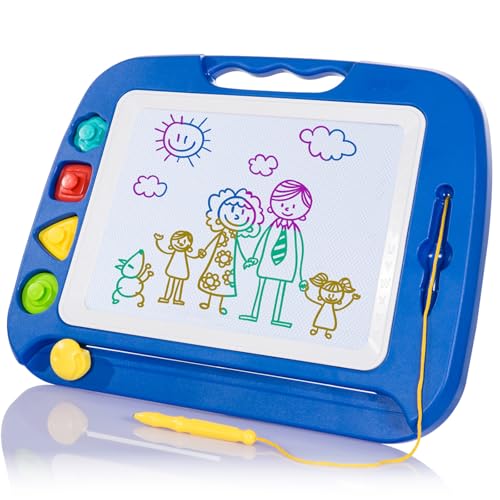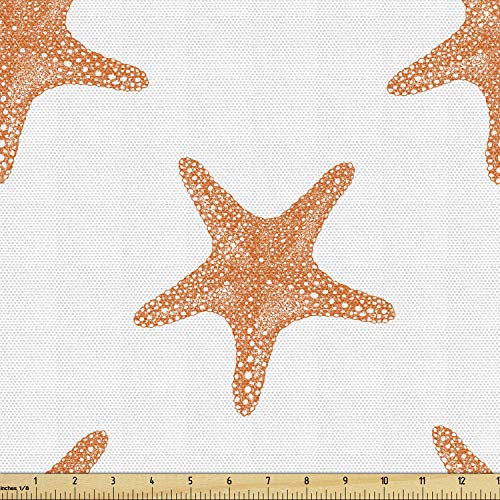Feeling happier is often about appreciating small joys. Drawing can boost your mood, especially when you sketch simple, delightful things.
In our busy lives, finding moments of happiness can be challenging. Simple drawings can provide a sense of calm and joy. They don’t need to be complex or time-consuming. Little doodles of everyday objects or cute creatures can brighten your day.
This blog will explore how drawing tiny, happy things can lift your spirits. It’s about finding joy in the simple act of creation. Whether you’re a seasoned artist or a beginner, these small sketches can bring a big smile. Get ready to discover how little things to draw can make you feel happier than ever.
Embracing Simple Joys
Life can be hectic. Sometimes, the simplest things bring the most joy. Sketching is one of those simple pleasures. It allows you to express yourself. It helps you to relax. Let’s dive into how sketching can bring happiness.
Finding Happiness In Sketching
Sketching can be a form of therapy. It helps you focus on the present moment. You don’t need to be a professional artist. Even drawing simple things can make you happy. Start with easy subjects. Draw a flower or a cup of coffee. You will notice how it lifts your mood.
| Simple Things to Draw | Why They Make You Happy |
|---|---|
| Flowers | Their beauty can be calming |
| Coffee Cups | Reminds you of relaxing moments |
| Pets | Brings a sense of warmth and joy |
The Power Of Little Things
Little things matter. Drawing small objects can help you appreciate life’s details. A sketch of a spoon, for example, can be a meditative act. It makes you notice the curves and the shine. These little details can bring immense satisfaction.
Here is a simple list of little things to draw:
- A leaf from your garden
- A piece of fruit
- Your favorite pen
Drawing these objects teaches you to find joy in simplicity. You learn to appreciate what you have. Your sketchbook becomes a treasure trove of happy moments.
Tools For Simple Sketches
Sketching can be a delightful way to express creativity. Simple sketches allow you to capture ideas quickly and effortlessly. Whether you are a beginner or an experienced artist, having the right tools can make a big difference. Below, we explore essential drawing supplies and choosing the right paper for your sketches.
Essential Drawing Supplies
To start sketching, you need some basic supplies. Here’s a list of essential items:
- Pencils: A set of pencils with different grades, from hard (H) to soft (B), gives you versatility.
- Erasers: A good quality eraser helps correct mistakes. Consider using a kneaded eraser for more delicate adjustments.
- Sharpener: Keep your pencils sharp for fine lines and details.
- Ruler: Useful for drawing straight lines and measuring.
- Blending Stumps: These help in blending and shading your sketches.
Investing in these basic supplies ensures you can create a variety of sketches.
Choosing The Right Paper
The type of paper you use affects the quality of your sketches. Here are some options to consider:
| Paper Type | Features |
|---|---|
| Sketch Paper | Lightweight, good for practice, and quick sketches. |
| Drawing Paper | Heavier weight, suitable for detailed work. |
| Bristol Paper | Very smooth surface, excellent for clean lines. |
| Watercolor Paper | Textured surface, great for mixed media. |
Choosing the right paper depends on your sketching style and the medium you use. For quick ideas, sketch paper works well. For detailed drawings, consider drawing or bristol paper. Mixed media artists may prefer watercolor paper for its texture.
Finding Inspiration
Finding inspiration for drawing can be challenging. But sometimes, the best ideas are right in front of you. Whether it’s a simple object on your desk or a walk in the park, inspiration is everywhere. Let’s explore some sources of creative sparks.
Everyday Objects
Look around your room. Ordinary items can be sources of inspiration. A coffee mug, a book, or even your phone can become fun drawing subjects. Try sketching these items from different angles. Notice the shapes and shadows. Play with the details. Here’s a quick list of common objects to get you started:
- Keys
- Glasses
- Plants
- Stationery
These simple objects can help you practice and improve your skills. They can also spark new ideas for more complex drawings.
Nature As Muse
Nature is a treasure trove of inspiration. Go outside and observe the world around you. Trees, flowers, and animals offer endless drawing possibilities. Here’s how nature can inspire you:
| Source of Inspiration | Ideas to Draw |
|---|---|
| Plants and Trees | Leaves, branches, and tree bark textures |
| Flowers | Petals, stems, and different flower species |
| Animals | Birds, insects, and small mammals |
Nature provides rich textures and patterns. These can add depth to your drawings. Take a sketchbook on your next walk. Draw what you see. Let nature be your muse.
Techniques For Beginners
Drawing can be a joyful and relaxing hobby. If you are just starting, learning some basic techniques can help you get better. Let’s explore some essential techniques for beginners. These will guide you to draw simple yet beautiful things.
Basic Shapes
Start with basic shapes. Circles, squares, triangles, and ovals are the building blocks. Practice drawing these shapes until you feel comfortable. They form the foundation of most drawings. For example, a cat’s head can start with a circle. A house can begin with a square and a triangle. These shapes help you create a strong base for your drawings.
Adding Details
Once you have your basic shapes, you can add details. Details bring your drawing to life. Start with simple lines and small shapes. For instance, add ears and eyes to the circle for a cat’s face. Draw windows and doors on the house. Keep the details simple at first. With time, you can add more complex details. This practice will improve your drawing skills.
Creating A Sketching Routine
Creating a consistent sketching routine can be the key to improving your drawing skills. Having a set time each day to draw can make you happier and more creative. Here, we will discuss how to set time aside and build a habit for sketching.
Setting Time Aside
Finding a specific time each day to sketch can be challenging. But it is essential. Consider your daily schedule and pick a time that works best for you. It could be in the morning, during lunch, or before bed.
Once you find the best time, stick to it. Treat it like an important appointment that you cannot miss. Here are a few tips to help you set time aside for sketching:
- Set a reminder on your phone or calendar.
- Create a comfortable space for sketching.
- Keep your materials ready and within reach.
- Start with short sessions and gradually increase the time.
Building A Habit
Building a habit of sketching can take time. Consistency is key. Aim to sketch every day, even if it’s just for a few minutes. Over time, this will become a natural part of your routine.
Here are some strategies to help you build a sketching habit:
- Set small goals to keep motivated.
- Track your progress in a journal.
- Join a drawing group for support and accountability.
- Reward yourself for sticking to your routine.
Consistency leads to improvement. By setting time aside and building a habit, you can enjoy the little things and become happier than ever with your sketches.

Sharing Your Joy
Sharing your joy is a powerful way to connect with others. Drawing brings happiness, and sharing it can spread that joy. When you share your work, you inspire and get inspired. It makes your art journey more fulfilling and enjoyable.
Social Media Platforms
Social media platforms are great for sharing your drawings. They allow you to reach a wide audience. You can post your art on Instagram, Facebook, or Twitter. These platforms have communities of artists and art lovers. They appreciate and support each other’s work. Use relevant tags to reach more people. This can help you gain followers and feedback.
Connecting With Fellow Artists
Connecting with fellow artists can be very rewarding. Join art groups or forums online. These spaces are full of people who share your passion. You can share tips and learn new techniques. Collaborate on projects to grow your skills. You will find a supportive network that understands your joy. This connection can keep you motivated and inspired.
Benefits Of Sketching
Sketching offers numerous benefits that can enhance your daily life. It is a simple hobby that brings joy and improves your overall well-being. Let’s explore some of the key benefits of sketching.
Mental Well-being
Engaging in sketching can significantly boost your mental well-being. It serves as a form of stress relief, helping you to unwind and relax. When you sketch, your brain focuses on the task at hand, reducing anxiety and negative thoughts.
Sketching also enhances mindfulness. It encourages you to live in the moment and appreciate the details around you. This practice can improve your ability to concentrate and stay present.
Additionally, sketching can improve your mood. Creating something beautiful or meaningful can bring a sense of accomplishment and happiness. Regular sketching can lead to a more positive outlook on life.
Creative Fulfillment
Sketching offers a profound sense of creative fulfillment. It allows you to express your imagination and creativity in unique ways. This creative outlet can be incredibly satisfying and rewarding.
Even simple drawings can provide a sense of achievement. As you see your skills improve over time, your confidence in your abilities grows. This can motivate you to explore new techniques and styles.
Sketching also encourages problem-solving. You learn to think outside the box and find creative solutions. This skill can translate into other areas of your life, enhancing your overall problem-solving abilities.
Finally, sketching can connect you with a community. Sharing your work with others and receiving feedback can inspire and motivate you. It creates a sense of belonging and mutual support among fellow sketchers.
Incorporate sketching into your routine to enjoy these benefits. Whether it’s a quick doodle or a detailed drawing, every sketch counts.
Frequently Asked Questions
What Are Some Easy Things To Draw For Beginners?
Simple shapes like circles, triangles, and squares are great for beginners. Try drawing basic objects like fruits and flowers.
How Can Drawing Little Things Make Me Happier?
Drawing small things can be relaxing. It helps you focus and reduces stress. It’s a fun way to express yourself.
What Tools Do I Need For Drawing Small Things?
You just need a pencil, eraser, and paper. You can also use colored pencils or markers for adding color.
How Often Should I Draw To Improve My Skills?
Drawing daily or a few times a week helps improve skills. Practice makes progress. Start with small, easy drawings.
Conclusion
Drawing small things can bring immense joy and satisfaction. These little sketches brighten your day. They help you relax and express your creativity. Start with simple shapes and ideas. Feel the happiness grow as your drawings improve. It’s a fun way to spend your time.
Remember, each tiny doodle adds to your artistic journey. Keep drawing and enjoy every moment!













